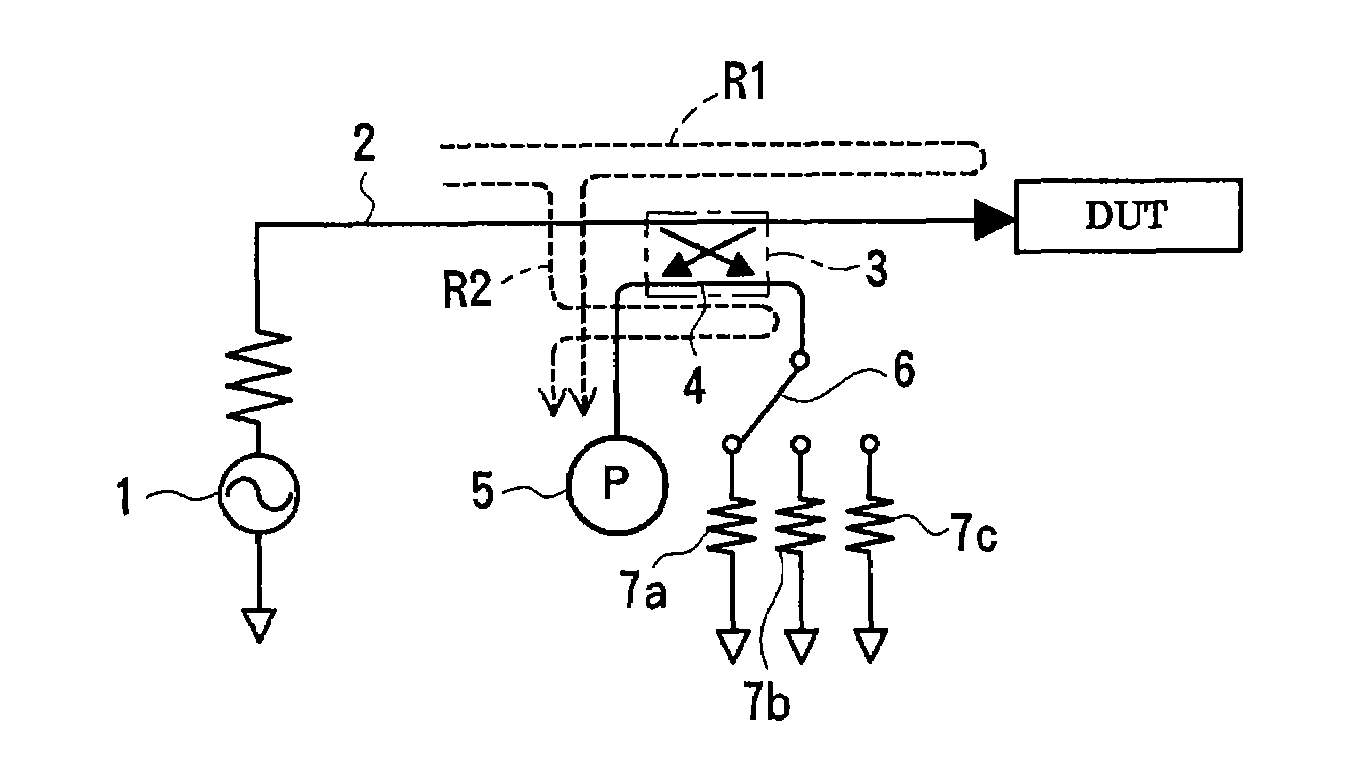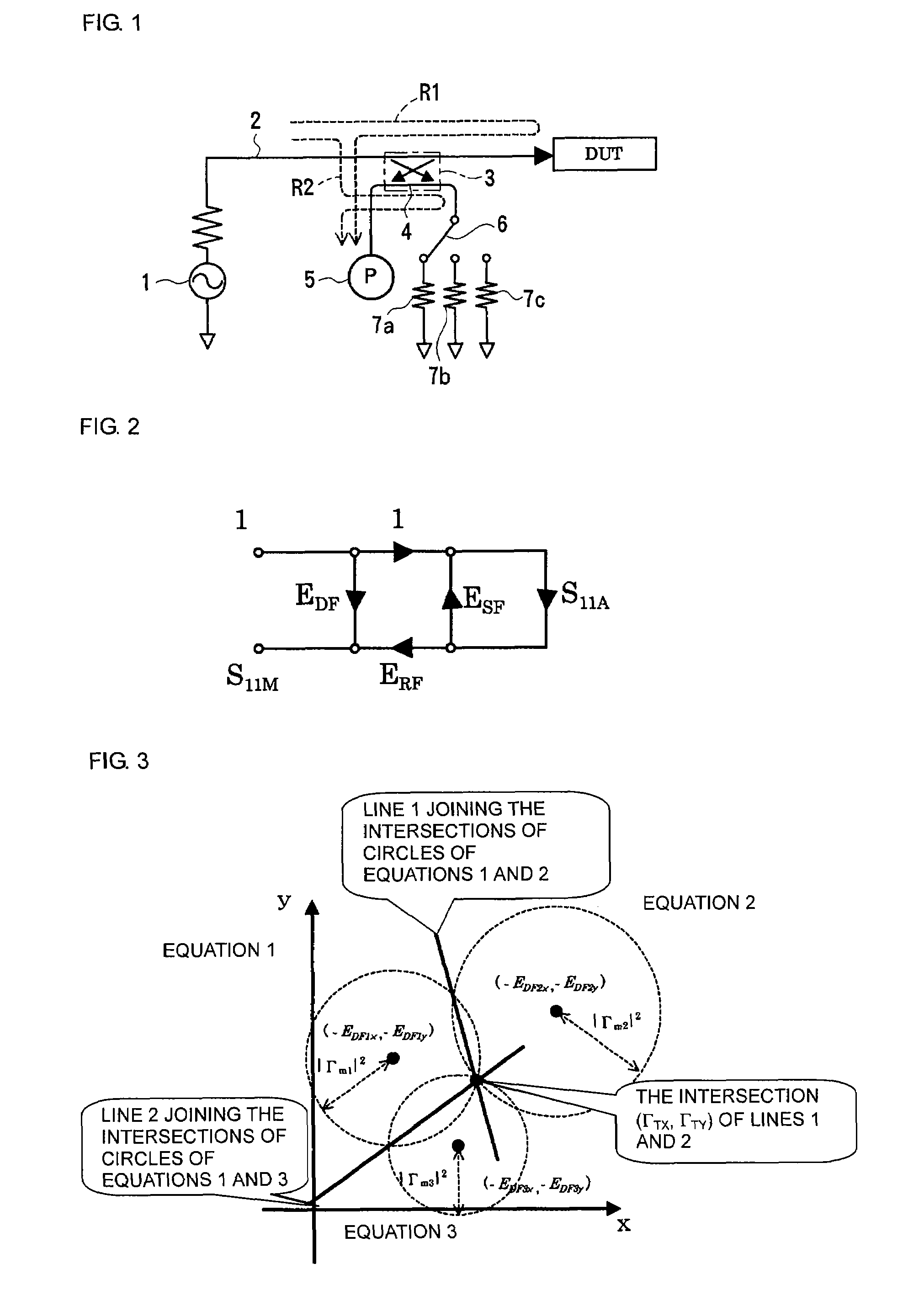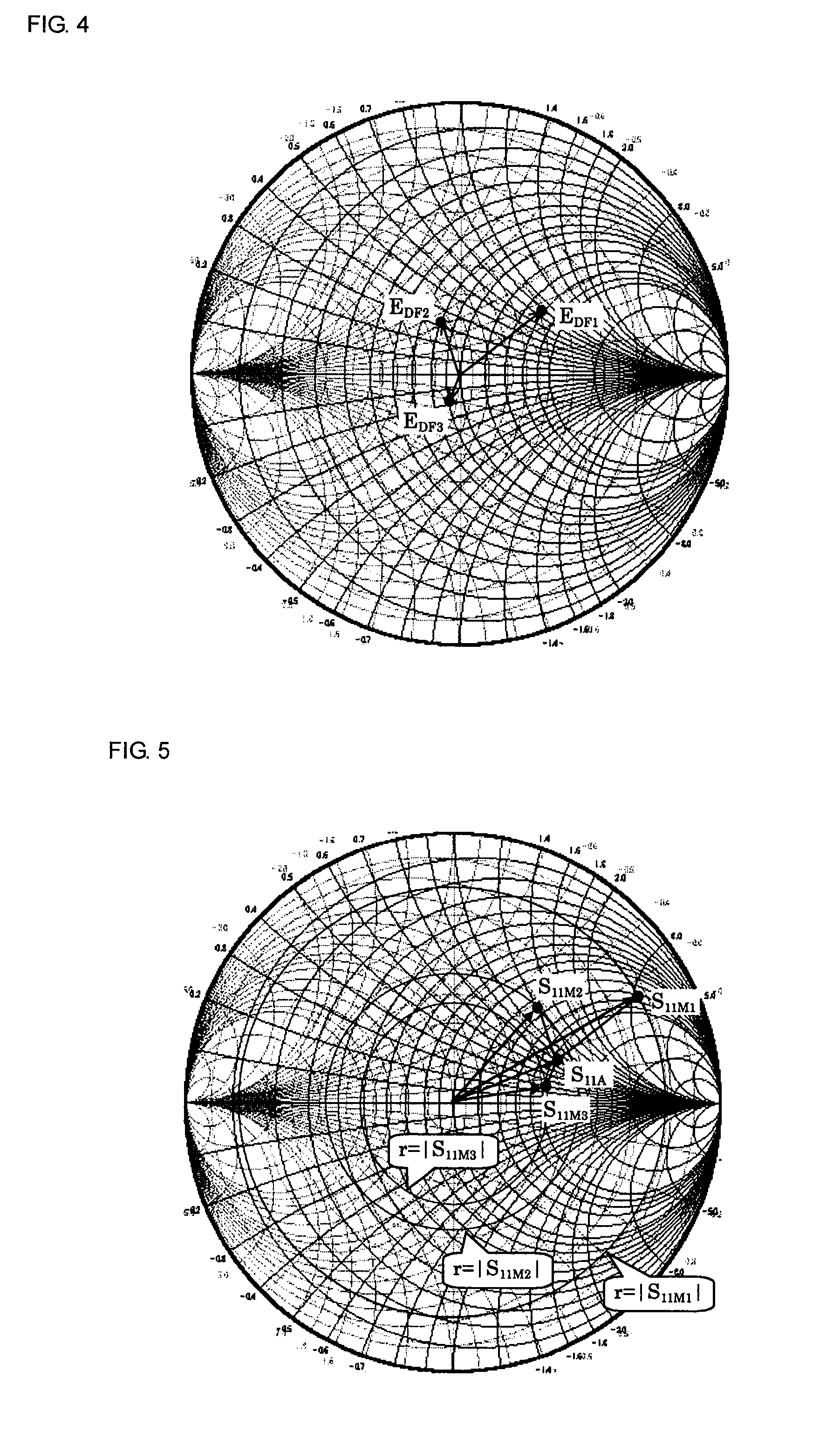Method and apparatus for measuring scattering coefficient of device under test
a technology of scattering coefficient and measurement method, which is applied in the direction of measurement device, resistance/reactance/impedence, instruments, etc., can solve the problems of difficult to accurately remove the error increase the cost, and many errors of the measurement system, so as to reduce the overall size of the measuring apparatus and reduce the cost. , the effect of reducing the purity of the measurement signal
- Summary
- Abstract
- Description
- Claims
- Application Information
AI Technical Summary
Benefits of technology
Problems solved by technology
Method used
Image
Examples
first preferred embodiment
[0044]FIG. 1 illustrates an apparatus for measuring a reflection coefficient of a DUT according to a first preferred embodiment of the present invention. A signal generated by a signal source 1 including an oscillator passes through a measurement signal path 2 and is applied to a DUT. A coupler 3 separating part of signals passing through the measurement signal path 2 is disposed in the measurement signal path 2. A first port of an error signal path 4 coupled to the measurement signal path 2 by the coupler 3, the first port being adjacent to the signal source, is connected to an electric-power measuring instrument 5 measuring a reflected wave as a scalar value, such as a power meter. A second port of the error signal path 4, the second port being adjacent to the DUT, is connected to three kinds of directional errors 7a to 7c via a directional selector switch 6. The directional errors 7a to 7c have different reflection phases from each other, and relation values thereof (relative vec...
second preferred embodiment
[0067]FIG. 6 illustrates an apparatus for measuring a transmission coefficient of a DUT according to a second preferred embodiment of the present invention. Measurement signals generated by a signal source 1 are separated into a first measurement signal for a measurement signal path 9 and a second measurement signal for an error signal path 10 by a power splitter 8. The first measurement signal entering the measurement signal path 9 is applied to the DUT. The second measurement signal entering the error signal path 10 is applied to one of three leakage errors 12a to 12c via a leakage selector switch 11. A wave transmitted through the DUT and a wave transmitted through each of the leakage errors 12a to 12c are superimposed, and superimposed signals are each measured as an electric-power value (scalar value) by an electric-power measuring instrument 13. The leakage errors 12a to 12c have different phases of transmitted waves from each other, and relation values (relative vector values...
third preferred embodiment
[0076]FIG. 7 illustrates an example of a one-path two-port measurement system in which the reflection coefficient measurement system illustrated in FIG. 1 and the transmission coefficient measurement system illustrated in FIG. 6 are combined. Measurement signals are separated by a power splitter 8. A first measurement signal is applied to a DUT, and a second measurement signal is applied to one of three leakage errors 12a to 12c via a leakage selector switch 11. A superimposed signal of a wave transmitted through the DUT and a wave transmitted through each of the leakage errors 12a to 12c is measured as an electric-power value (scalar value) by an electric-power measuring instrument 13. A coupler 3 is disposed in a measurement signal path 2. A first port of a signal path coupled to the measurement signal path 2 by the coupler 3, the first port being adjacent to the signal source, is connected to an electric-power measuring instrument 5 measuring a reflected wave as an electric-power...
PUM
 Login to View More
Login to View More Abstract
Description
Claims
Application Information
 Login to View More
Login to View More - R&D
- Intellectual Property
- Life Sciences
- Materials
- Tech Scout
- Unparalleled Data Quality
- Higher Quality Content
- 60% Fewer Hallucinations
Browse by: Latest US Patents, China's latest patents, Technical Efficacy Thesaurus, Application Domain, Technology Topic, Popular Technical Reports.
© 2025 PatSnap. All rights reserved.Legal|Privacy policy|Modern Slavery Act Transparency Statement|Sitemap|About US| Contact US: help@patsnap.com



